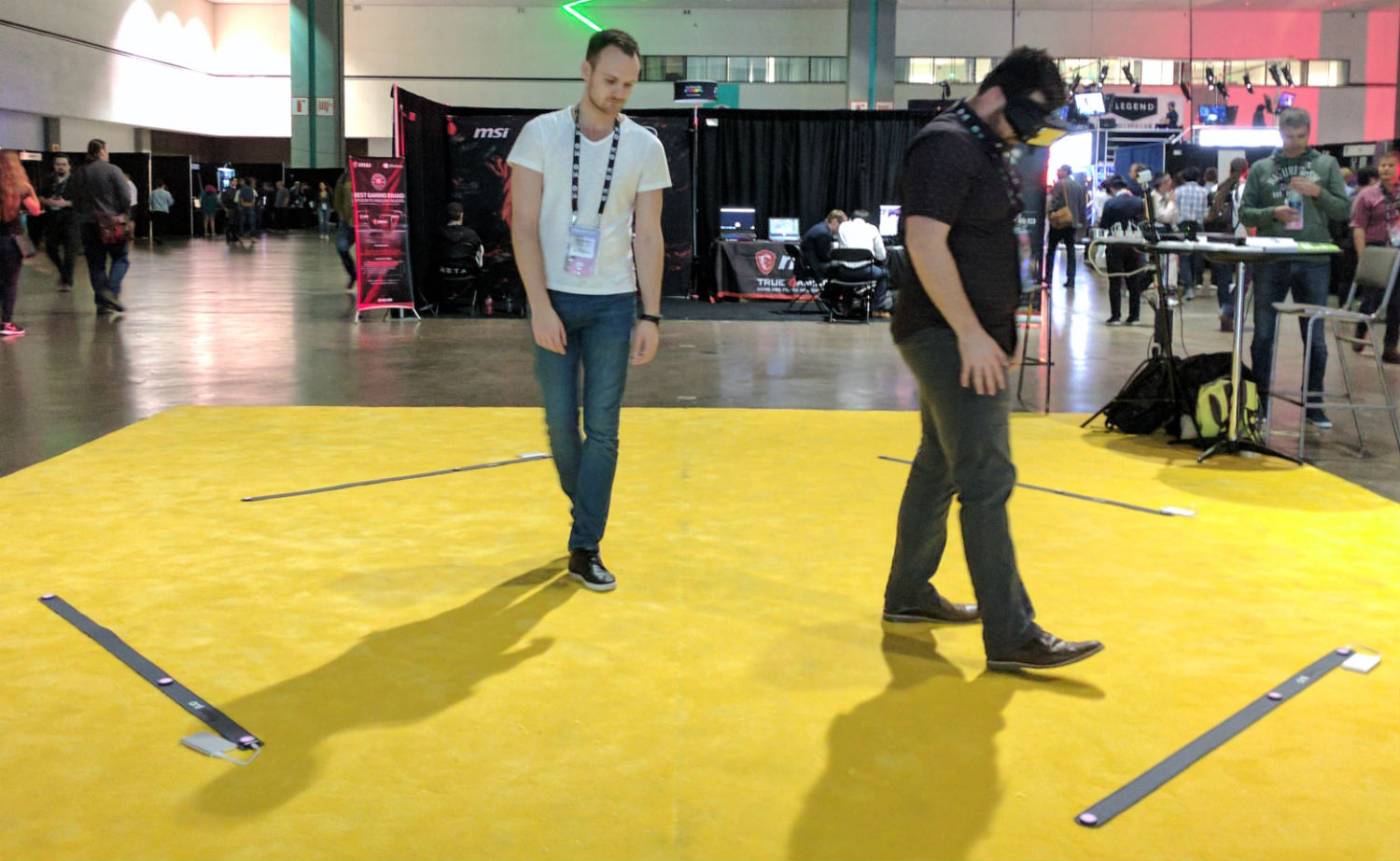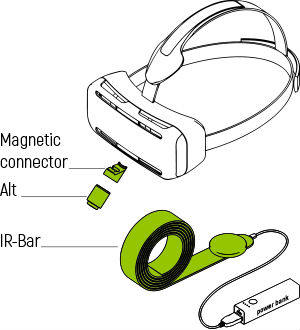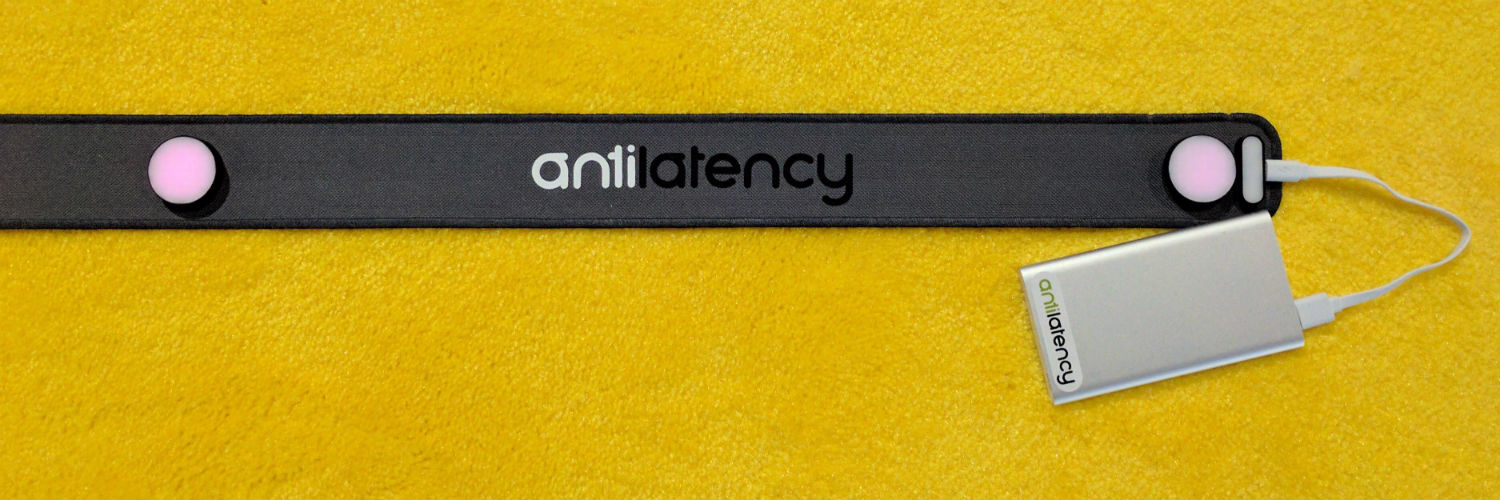At VRLA we got a look at an impressive tech demo from a startup out of Russia that is moving to San Francisco soon.
The startup is called Antilatency and its team built a positional tracking solution they say requires no calibration but is expandable to cover warehouse sizes or beyond. The setup we saw at VRLA was around 6 meters by 6 meters with a Gear VR tracked throughout the space.
The system features a small on-board camera on the bottom of the headset facing down and outward. It detects infrared light markers on strips at the outer edge of the tracked space. For the demo we saw there were four strips placed in a square. Jumping, crouching quickly, moving back and forth and even stepping outside the square itself all worked well as long as the camera could spot one of the markers. Each marker strip was powered by a portable USB battery pack.
The unit on the headset also includes additional inertial movement hardware, like a gyroscope and accelerometer, to hone the tracking and provide a few seconds of redundancy for any moments when the camera loses sight of the strips. This could be useful for multi-user setups when other people block the view of the markers — Antilatency says the tracking solution should work outdoors as well. During the few very brief moments when the headset did seem to lose tracking my view of the world seemed to “swim” or float as if I was bobbing around a pool. This was not a new feeling — it happened during a brief tracking hiccup in Facebook’s Santa Cruz prototype last year. Overall, though, the tracking lapses in Antilatency were barely noticeable.
“It should be fixed in one month, it’s just a question of factory calibration,” a company representative said. “It’s a known issue and the solution is known as well.”
That said, the demo shown was an extremely sparse virtual area with a TV and a couple chairs that looked like it was inspired by the empty white room scene from The Matrix. So I wasn’t able to test the hardware with any fully interactive software that would’ve painted a fuller picture of how the system could perform.
Antilatency clearly put a lot of thought into the design of its hardware — with the strips easily rolling into a tiny can for shipping and its tracking module being extensible to a thin wand-like hand controller with the camera on the tip. The controller was merely a concept at this point. The light strips can be placed overhead, too, according to the company, though the camera would need to be moved to be facing upward. Overhead light strips would alleviate worry about accidentally stepping on them.
The company hinted they have announcements planned regarding next steps, and we look forward to hearing more from them.
Correction: This article was updated to explain how the infrared light markers work. They provide a constant beam of light and do not pulse.






























